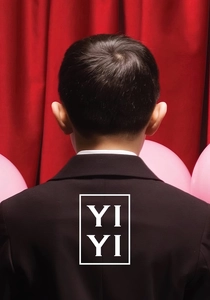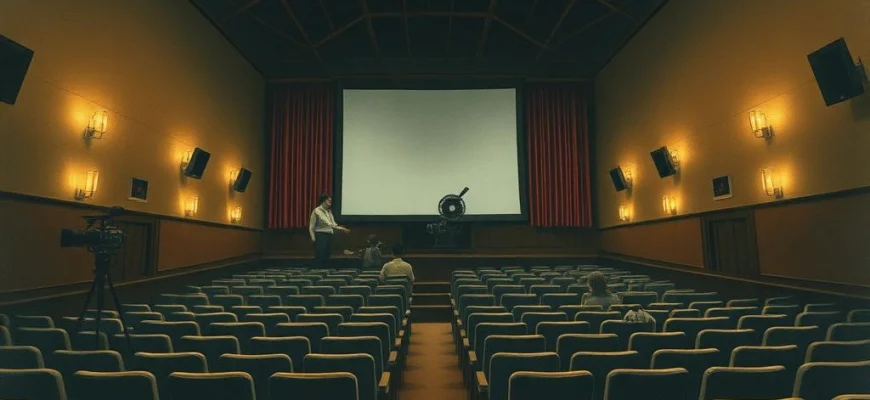If you loved the meditative, slow-burning beauty of 'Goodbye, Dragon Inn' (2003), you're in for a treat. This article explores 10 similar films and shows that capture its poetic stillness, nostalgic melancholy, and deep appreciation for cinema. Whether you're a fan of Tsai Ming-liang's work or simply enjoy contemplative storytelling, these recommendations will transport you to equally mesmerizing worlds.

Chungking Express (1994)
Description: Features a fragmented narrative structure and a dreamlike quality, blending urban isolation with fleeting human connections. The cinematography captures the vibrancy and loneliness of city life.
Fact: The film was shot in just 23 days, with the second story conceived and written during the production of the first. It popularized the use of step-printing, a technique that alters the film's frame rate.
 Watch Now
Watch Now 
Fallen Angels (1995)
Description: Explores themes of alienation and longing through nonlinear storytelling and striking visual compositions. The film's use of neon-lit urban landscapes creates a surreal, melancholic atmosphere.
Fact: The movie was originally intended to be the third segment of 'Chungking Express' but grew into a separate project. It features extreme wide-angle lens shots to distort perspectives.
 Watch Now
Watch Now 
In the Mood for Love (2000)
Description: Shares a meditative, slow-paced storytelling style with a focus on unspoken emotions and atmospheric tension. The visual aesthetics are meticulously composed, emphasizing mood over dialogue.
Fact: The film's iconic cheongsam dresses were designed by William Chang, who also served as the production and costume designer. It was shot without a completed script, relying heavily on improvisation.
 Watch Now
Watch Now 
Yi Yi (2000)
Description: A contemplative family drama that unfolds with quiet precision, capturing the subtleties of everyday life. The film's observational style and deep emotional resonance mirror the introspective tone.
Fact: The title translates to 'A One and a Two,' reflecting the film's interwoven narratives. It was the final film directed by Edward Yang before his passing.
 Watch Now
Watch Now 
Millennium Mambo (2001)
Description: Delivers a hypnotic, atmospheric portrayal of youth and disconnection, with a focus on sensory experiences over plot. The film's visual style is lush and immersive, emphasizing mood and texture.
Fact: The opening shot, a long take of the protagonist walking through a tunnel, was achieved in one take after multiple rehearsals. The film's electronic soundtrack became iconic in its own right.
 Watch Now
Watch Now 
Flight of the Red Balloon (2007)
Description: A poetic, minimalist exploration of urban life and childhood, with a focus on quiet moments and visual storytelling. The film's loose structure and observational style evoke a sense of fleeting beauty.
Fact: It was commissioned by the Musée d'Orsay as part of a series of films inspired by its collection. The red balloon was created using CGI, a departure from the original short film's practical effects.
 Watch Now
Watch Now 
Tokyo Sonata (2008)
Description: Examines the fractures within a family through restrained, almost clinical storytelling. The film's stark visuals and understated performances amplify its themes of isolation and societal pressure.
Fact: The director initially planned to make a documentary about unemployment but shifted to this fictional narrative. The piano scenes were performed by a professional pianist who was not an actor.
 Watch Now
Watch Now 
Still Walking (2008)
Description: A deeply humanistic family drama that unfolds with quiet, deliberate pacing. The film's emphasis on mundane moments and unspoken emotions creates a profound sense of realism and intimacy.
Fact: The story is semi-autobiographical, inspired by the director's own family gatherings. It was shot in sequence to maintain the natural flow of the narrative.
 Watch Now
Watch Now 
The Assassin (2015)
Description: A visually stunning, slow-burning martial arts film that prioritizes atmosphere and composition over action. The film's deliberate pacing and emphasis on silence create a meditative experience.
Fact: The production took over a year due to the director's meticulous attention to historical detail. Many scenes were shot using only natural light to maintain authenticity.
 Watch Now
Watch Now 
A Brighter Summer Day (1991)
Description: A sprawling, emotionally rich coming-of-age story that captures the complexities of youth and societal change. The film's immersive storytelling and attention to detail create a deeply resonant experience.
Fact: The title comes from an Elvis Presley song, reflecting the cultural influences of the era. It was based on a real-life murder case that shocked Taiwan in the 1960s.
 Watch Now
Watch Now 








